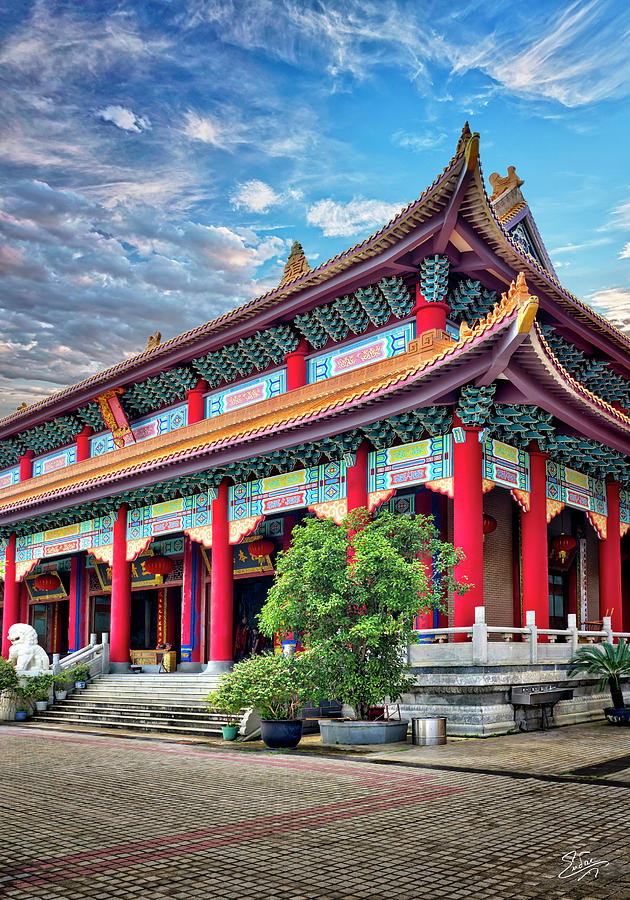Huanglongsi Temple: A Glimpse Into History And Architecture
Share

Nestled in the serene landscapes of Sichuan Province, China, Huanglongsi Temple stands as a testament to the rich cultural heritage and architectural brilliance of ancient China. This temple, with its intricate designs and historical significance, attracts visitors from around the globe. Let’s embark on a detailed exploration of Huanglongsi Temple's history, architecture, and the experiences it offers to travelers.
A Historical Overview of Huanglongsi Temple
Origins and Establishment
Huanglongsi Temple, also known as Huanglongsi Monastery, dates back to the Tang Dynasty (618-907 AD). Originally built as a Buddhist temple, it has undergone several renovations and expansions over the centuries, reflecting the evolving architectural styles and religious practices in China. The temple was initially established to honor the Buddha and serve as a place of worship for monks and laypeople alike.

The Cultural Significance
Throughout its history, Huanglongsi Temple has played a pivotal role in the spread of Buddhism in the region. It has served as a center for Buddhist learning and practice, attracting monks and scholars who contributed to the temple's rich intellectual and spiritual life. The temple has also been a site for various cultural events and festivals, showcasing traditional Chinese art, music, and dance.
Historical Events
Over the centuries, Huanglongsi Temple has witnessed numerous historical events, including wars and political changes. Despite these challenges, the temple has remained a symbol of resilience and faith. Its historical significance is not only tied to its religious function but also to its role in the community, where it has been a gathering place for locals and visitors alike.
Architectural Marvels of Huanglongsi Temple
Design and Structure
The architecture of Huanglongsi Temple is a stunning blend of traditional Chinese styles, characterized by its intricate wooden carvings, ornate roofs, and vibrant colors. The temple complex consists of several halls and pavilions, each serving a specific purpose. The main hall, dedicated to the Buddha, features a grand statue that draws the attention of all who enter.
Materials and Techniques
Constructed primarily from wood, stone, and clay, the temple showcases the craftsmanship of ancient builders. The use of traditional joinery techniques, without nails, is a testament to the skills of the artisans who built it. The roofs are adorned with decorative tiles and intricate eaves, adding to the temple's aesthetic appeal.
Symbolism in Architecture
Every element of Huanglongsi Temple's architecture carries symbolic meaning. The layout follows the principles of Feng Shui, promoting harmony and balance. The colors used in the temple's design are also significant; red symbolizes good fortune, while gold represents wealth and prosperity. These elements come together to create a space that is not only beautiful but also spiritually uplifting.
Visiting Huanglongsi Temple
Best Time to Visit
The ideal time to visit Huanglongsi Temple is during the spring (March to May) and autumn (September to November) months. During these seasons, the weather is mild, and the natural surroundings are at their most beautiful, making your visit even more enjoyable. Expect temperatures to range from 15°C to 25°C (59°F to 77°F), perfect for exploring the temple grounds.
Getting There
Huanglongsi Temple is easily accessible from Chengdu, the capital of Sichuan Province. Visitors can take a bus or hire a private transfer to reach the temple. The journey offers picturesque views of the surrounding countryside, enhancing the overall experience.
Book your hotel and flights here!
What to Expect
Upon arriving at Huanglongsi Temple, visitors are greeted by the serene atmosphere and the stunning architecture that surrounds them. Take your time to explore the various halls, each filled with beautiful statues, murals, and inscriptions that tell stories of Buddhism and Chinese culture. Don’t forget to participate in the local rituals, such as lighting incense and making offerings, to fully immerse yourself in the spiritual experience.
Activities and Attractions Nearby
Scenic Surroundings
The temple is situated in a picturesque area, surrounded by lush greenery and mountains. Take a leisurely stroll around the temple grounds to enjoy the natural beauty and tranquility. The nearby Huanglong Scenic Area is also worth a visit, famous for its colorful pools and diverse wildlife.
Cultural Experiences
Engage with the local culture by attending one of the temple's festivals, where you can witness traditional performances and rituals. These events offer a unique insight into the spiritual life of the community and the significance of Huanglongsi Temple in their daily lives.
Photography Opportunities
For photography enthusiasts, Huanglongsi Temple provides countless opportunities to capture stunning images. From the intricate details of the architecture to the breathtaking landscapes, every corner of the temple complex is a visual feast.
Conclusion
Huanglongsi Temple is more than just a historical site; it is a living testament to the enduring spirit of Buddhism and Chinese culture. Its rich history, stunning architecture, and serene surroundings make it a must-visit destination for travelers seeking a deeper understanding of China's spiritual heritage. Whether you are a history buff, an architecture lover, or simply in search of tranquility, Huanglongsi Temple offers an unforgettable experience that resonates long after your visit.
Don't miss out on the chance to explore this magnificent temple and the surrounding beauty of Sichuan Province. Plan your trip today!



